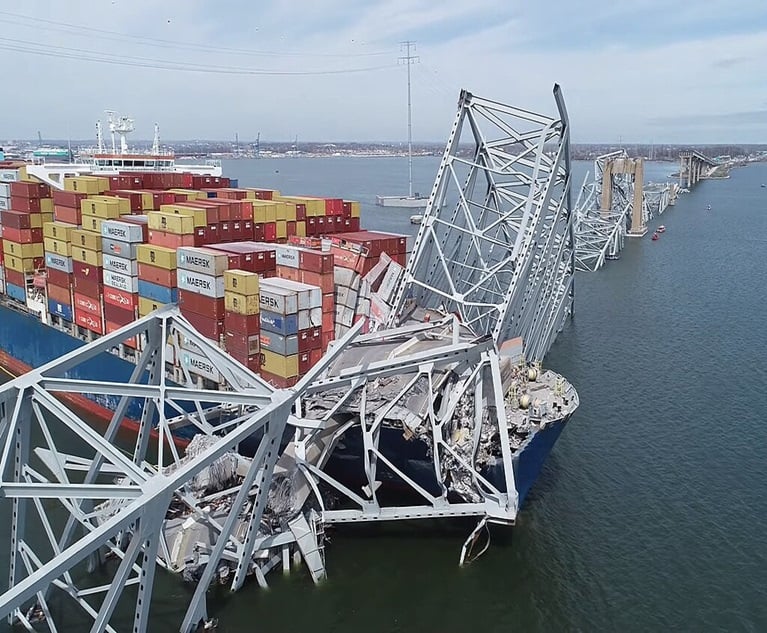In a perfect world, claims managers would be able to check the“yes” box each time an insured submits a claim.
|Of course, in order for them to do so, the insured must havecoverage for the exposure. This is just one of the reasons claimsmanagers must have a seat at the table where policies arewritten.
|By knowing what waits at the end of the road, they can helpinform those who plan the trip.
|Related: 5 keys to navigating environmentalclaims
|To understand any insured's need for pollution liabilityinsurance coverage, there are 10 situations to help identifypotential pollution-related exposures. However, before reviewingthese situations, consider this five-step program to help companiesidentify and remediate pollution hazards.
|Step 1: Identify pollution hazards.
This first step involves taking a walk around the workplace toidentify trouble spots. Ask employees to list hazards throughface-to-face meetings or anonymous suggestion boxes; hold staffworkshops, have discussions with peers at professional associationmeetings and conferences; become familiar with key links in thesupply chain; read trade publications and hire a professional riskexpert.
|Step 2: Decide who might be harmed by these hazards andhow.
After identifying the hazards, the next step is for the insuredto understand whom they might harm. This can include employees,local homeowners and other businesses.
|Step 3: Evaluate the risks and choose controlmeasures.
After identifying pollution hazards, determine how to protectthose at risk of being harmed. One obvious action is to removehazards that can be reasonably eliminated. When a hazard cannot beentirely eliminated, steps should be taken to contain it.
|Step 4: Make a physical record of yourfindings.
Record findings and share them with affected members of theinsured's organization when appropriate. By recording an account ofhow the insured plans to either eliminate hazards or reduce therisk of their occurrence, there will be a physical record thathazards were identified, decisions were made about who could beharmed and how, and a plan was executed to eliminate or mitigatehazards.
|Related: A look at environmental risks for propertyowners
|Step 5: Formalize a process to periodically review andupdate your assessment.
Change is constant. This is true of the physical workplace,environmental factors including climate, the condition of machineryand other equipment, new or improved technology, employee skilllevels and experience, supply chains and clients. This evenincludes products and services — each time the insured adds or evenmodifies a product or service, a fresh risk can be added to thebusiness. Consequently, a process must be in place where theinsured reviews and updates the risk assessment on an ongoingbasis.
|Uninsured pollution exposures
While oil and chemical companies are typically forward thinkingwhen it comes to pollution exposures, many other companiesunknowingly have uninsured pollution exposures. What's more, it ispossible there are literally thousands of companies exposed andunaware of the significant financial risks they face.
|While it is impossible for a risk analyst to know if a companyis at risk without reading the liability insurance policy, here are10 situations to help identify potential pollution-relatedexposures.
- |
An air compressor fails and the operating hydraulic fluid leaks,contaminating a property or causing bodily injury to a thirdparty.
An ammonia refrigeration system leaks, disrupting youroperations or those of a third-party facility, causing a shutdown.
A facility adjacent to the insured's plant has a chemical leak,causing the company to shut down for several weeks until the EPAdeems it safe for employees to return to work.
A product is ingested, causing a bodily injury orhypersensitivity allegation.
A product “contaminates” another's product or manufacturingequipment.
Process wastewater runs into a nearby stream.
A fire at the insured's facility creates smoke and a terribleodor, causing the surrounding residential neighborhood to allegeimpairment and the filing of multiple lawsuits against theinsured.
Dust released from a cyclonic collecting tower causes allegedbodily injury to a third party as well as extensive damage to yourproperty. The EPA also mandates a cessation of operations duringthe cleanup process, which severely disrupts an insured'srevenuestream.
A residential facility or nursing home fields complaints of moldor Legionella, which leads to lawsuits alleging bodily injury, theshutdown of the facility, and lost profits, rents andreputation.
Paint, or some other type of liquid substance (pollutant), runsoff the insured's facility into a nearby drain or stream.
Being aware of the risks allows owners to employ strategies tomitigate their impact and recover more quickly after a disaster. Astrong risk management program considers a wide variety of dangersand solutions to prevent or alleviate them.
|Related: When is a policy's pollution exclusion applicableto contractor damage?
|Brian Heun ([email protected]) is thesales and relationship manager and a partner at KMRD Partners,Inc., a nationally recognized risk and human capital managementconsulting and insurance brokerage firm located in the Philadelphiaregion and serving clients worldwide.
Want to continue reading?
Become a Free PropertyCasualty360 Digital Reader
Your access to unlimited PropertyCasualty360 content isn’t changing.
Once you are an ALM digital member, you’ll receive:
- All PropertyCasualty360.com news coverage, best practices, and in-depth analysis.
- Educational webcasts, resources from industry leaders, and informative newsletters.
- Other award-winning websites including BenefitsPRO.com and ThinkAdvisor.com.
Already have an account? Sign In
© 2024 ALM Global, LLC, All Rights Reserved. Request academic re-use from www.copyright.com. All other uses, submit a request to [email protected]. For more information visit Asset & Logo Licensing.








